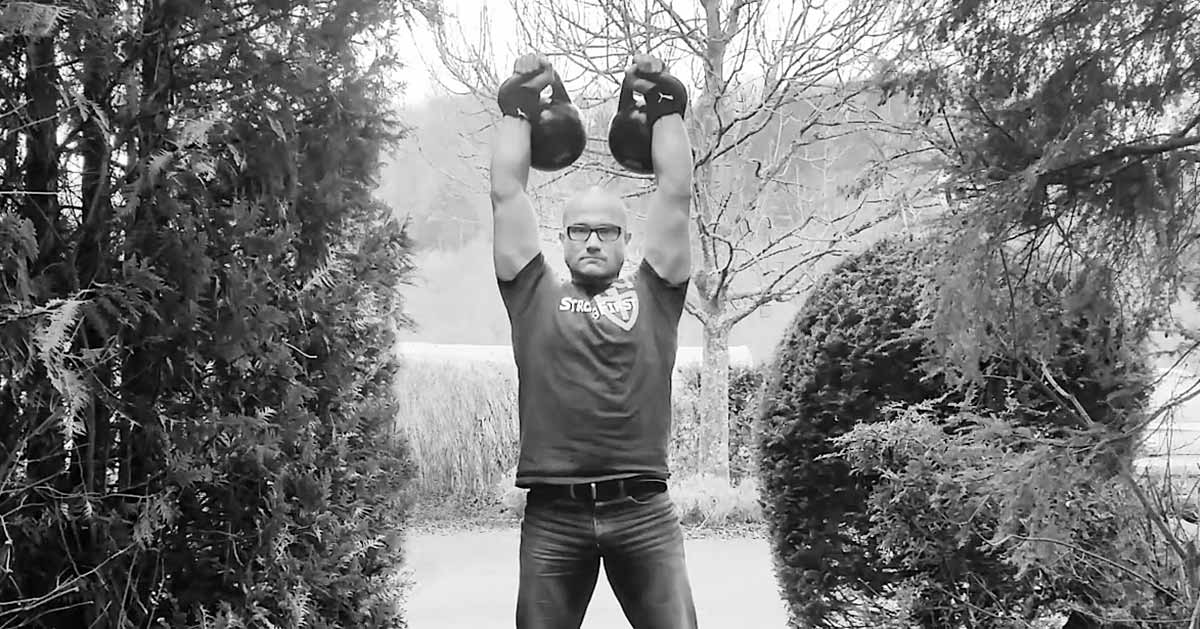Some quotes from the study:
The training protocol did not significantly improve aero- bic fitness or strength of the shoulders and trunk flexors.
...
The highly significant increase in back extensor strength, as opposed to no change in shoulder or trunk flexor strength, validates the specificity of the peak forces generated.
...
Our study is the first to demonstrate that ballistic cyclic training with high peak forces markedly lowers pain symptoms in both the neck/shoulder and low-back region. Thus, kettlebell training can be implemented at the workplace to reduce common musculoskeletal pain symptoms.
...
The session duration of 20 minutes (consisting of 5–10 minutes of warm-up followed by 10–15 minutes of kettlebell training) does not leave ample duration to stimulate significant cardiovascular adaptations.
...
In conclusion, our randomized controlled trial showed reductions of neck/shoulder and low-back pain as well as increased muscle strength of the trunk exten- sors in response to 8 weeks of ballistic kettlebell train- ing. However, the training protocol did not significantly improve aerobic fitness or strength of the shoulders and trunk flexors.
This is why I brush off this study.
Trunk flexors and shoulder strength is not improved….
How did they measure the trunk flexor strength and shoulder strength?
All exercise, including Yoga, will increase strength of some muscles. If you could not understand which of the shoulder muscles are working and how to measure their strength correctly then you did not think this study throughly as a scientist.
In this case, I have to believe in either of those things.
1) Kettlebell magically is turning around my shoulder joint defying physics central forces generated.
2) The magic is not in the central forces generated, but it is the stabilizers in the shoulder which work during a swing, are prone to development via induced tension and applied force. If this is the case, our stabilizers and rotator cuff so on so forth muscles are not indeed muscles. They are different type of organs that does not respond to stimulation.
Well when it comes to ab flexion … The same magic applies here as well. I will be amazed.
Honestly, if you want one thing from your abs it is to keep you stabilized in a sudden explosive way, same goes with your shoulder “strength”. I think a KB one arm swing, develops the most fundamental aspects of those muscles involved. They are meant to stabilize your body and joints.
And one more thing.
There are studies that find effectiveness of a 10 minute walk. You can divide your daily walking “pill” in to 10 minute blocks and get benefit.
Let’s put aside the swings for a moment.
I was sedentary for 47 years, and my first form of exercise (I now recall, it was not resistance bands) it was a 7 minute body workout.
I was overweight and was only able to do some kind of warm up for 7 minutes. (I was not able to perform the prescribed famous 7 min workout)
I was lazy, and inconsistent. I was starting and then not following up. The first thing that I have noticed was, you can improve things after a long sedentary life, with extremely low volume.
In my case, weekly 7 minutes warm up was enough to progress to my surprise. I was like starting every Monday, then giving up. A few Monday’s later, the warm up was no more a challenge. Because believe it or not, it created enough stimulus on everything in my body enough to show progress.
Today, if I drop my volume to 7 minutes warm up a week, I will regress in everything I do, and quite rapidly. Because my body got used to.
But I know again for a fact, every single warm up that I do (if I do) before my workout is a brick on the wall. It is not nothing. (S&S warm up routine gave me big time)
That is why I jumped in to the wagon of 20 minutes weekly resistance band strength training.
Again that 20 minutes a week was enough for strength and hypertrophy.
I can guarantee from experience that, weekly 3 times 10 minute warm ups alone, will improve everything about fitness of a sedentary person. Because it is much above what I have started with in the first place, and I don’t think I am the most genetically gifted athlete around.
This study was not able to detect the positive impact of 3 x 10 min warm ups a week. So they were not precise on anything.
15 minutes KB Swing magically not improving your cardiovascular system?
Here there are advanced trainees. They take walks of 10-15 minutes or half an hour. It is sth. If a study can not measure it, it is the studies fault. What makes KB swings so inferior to walking? The fact that my largest muscle work in an explosive way?


